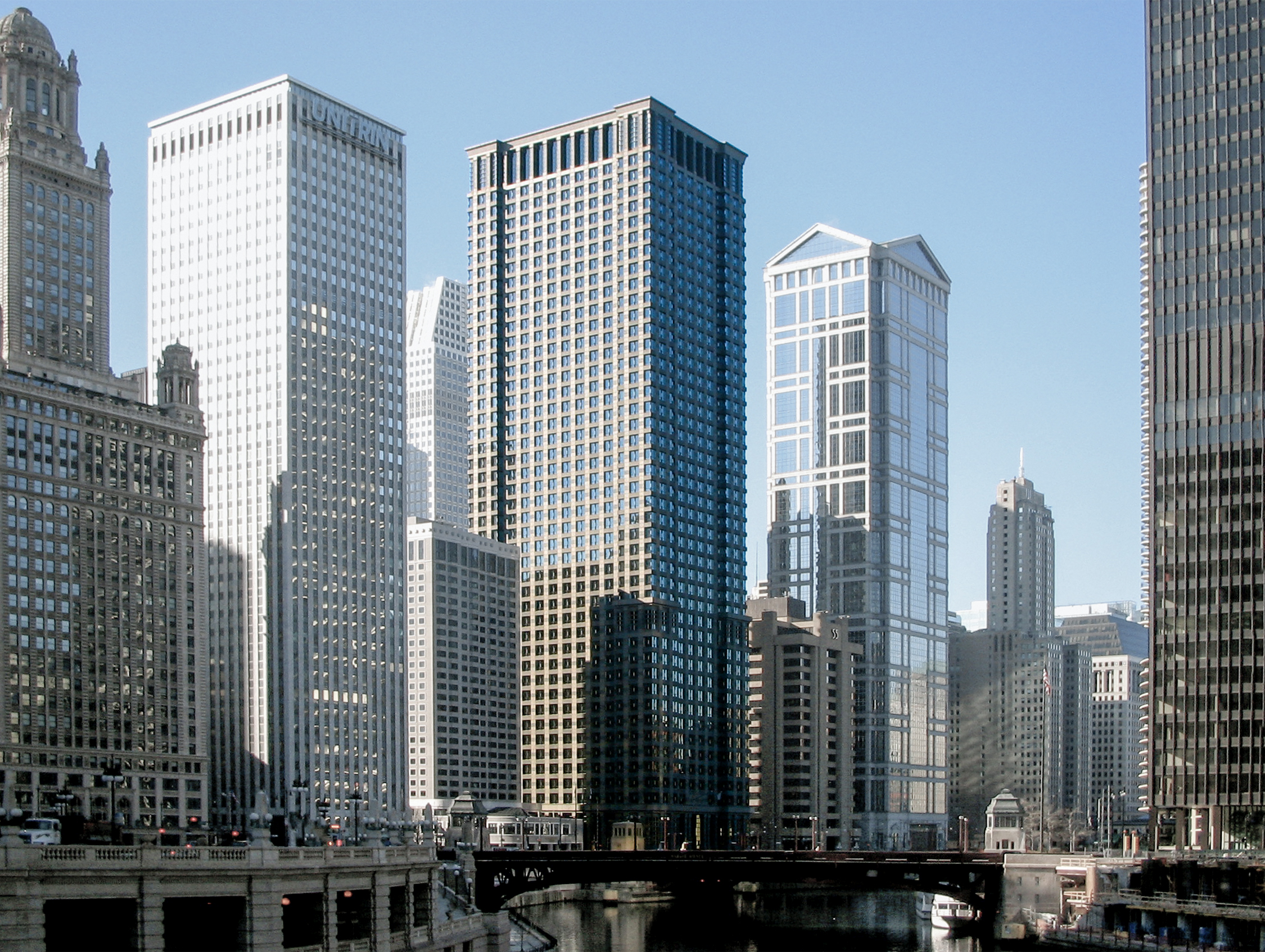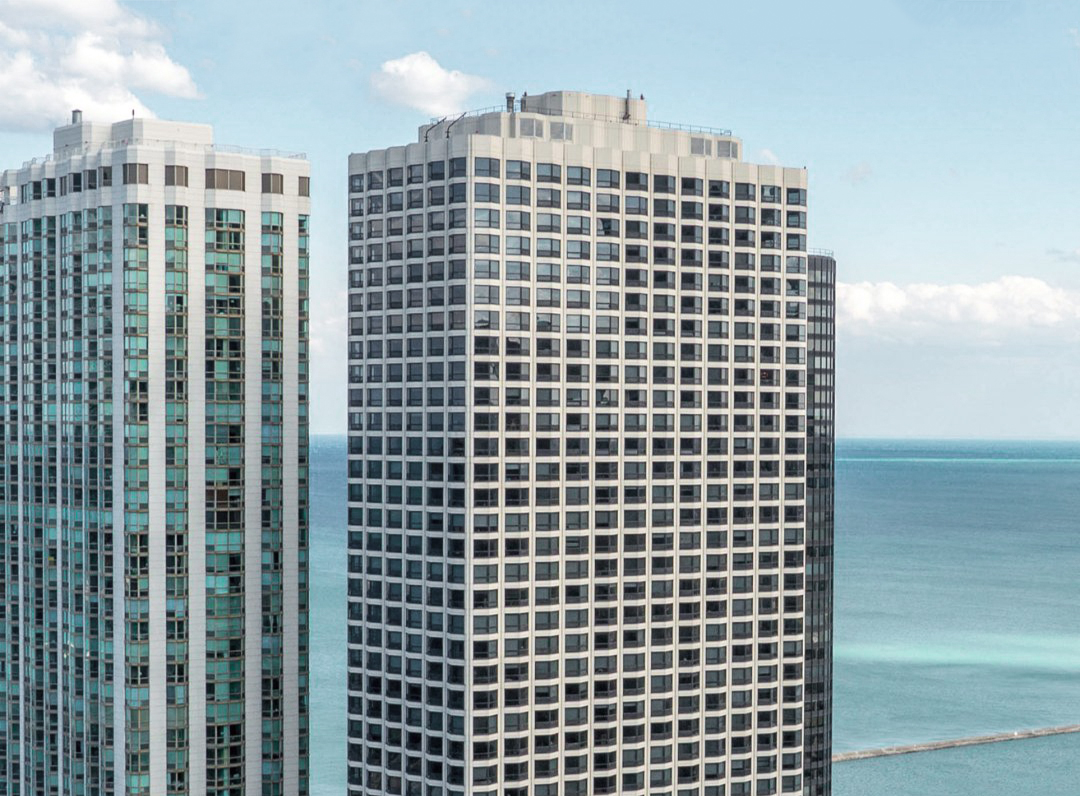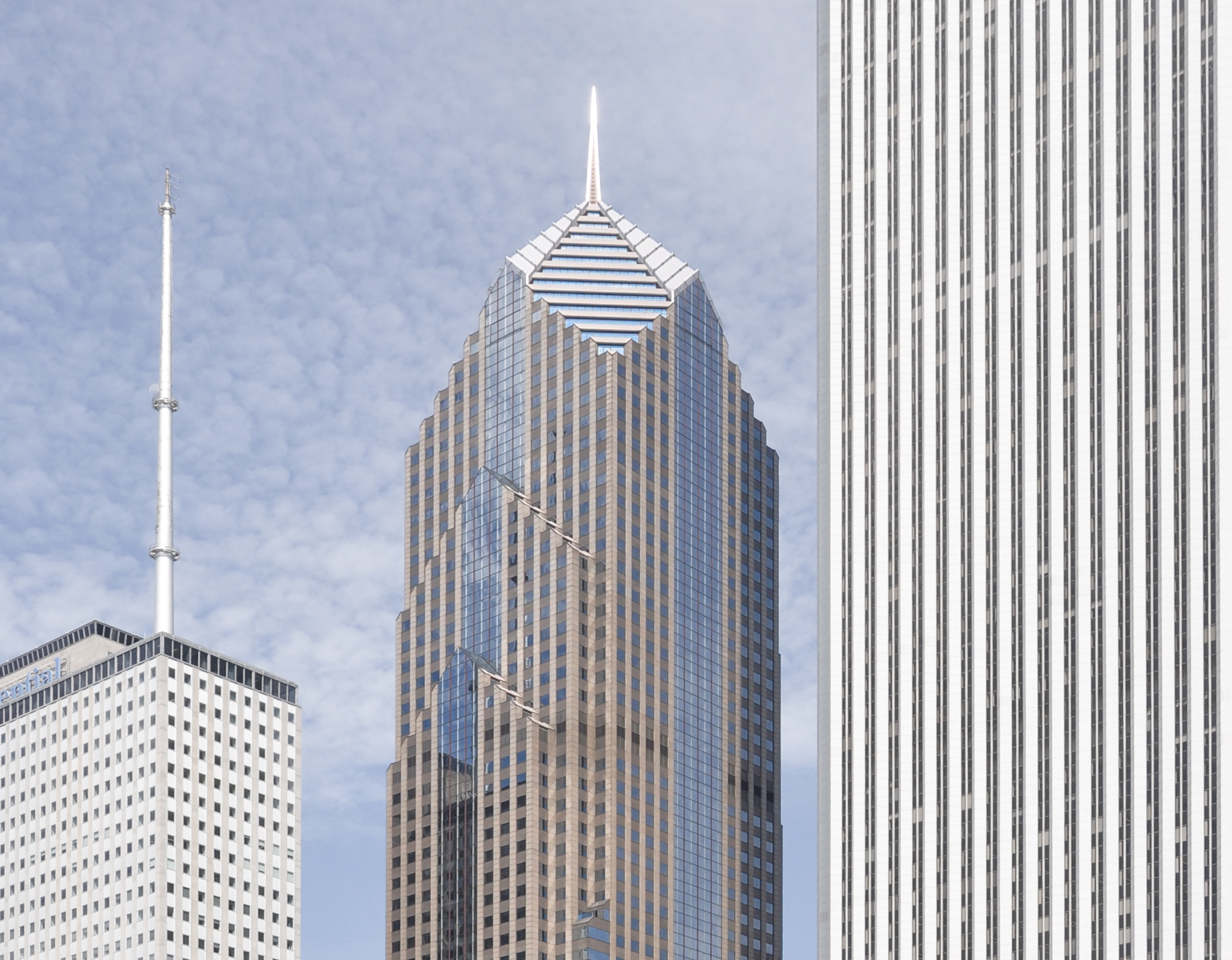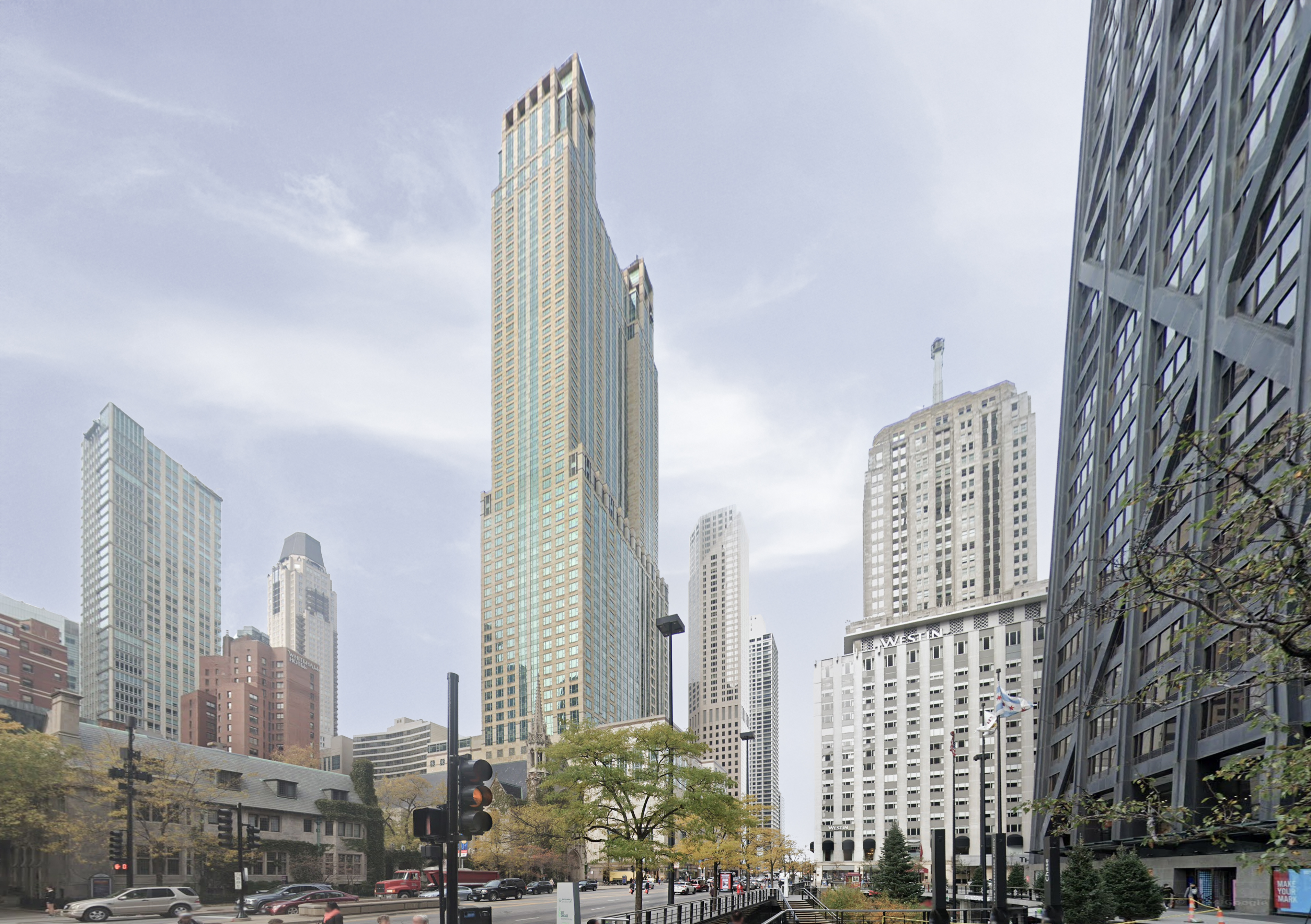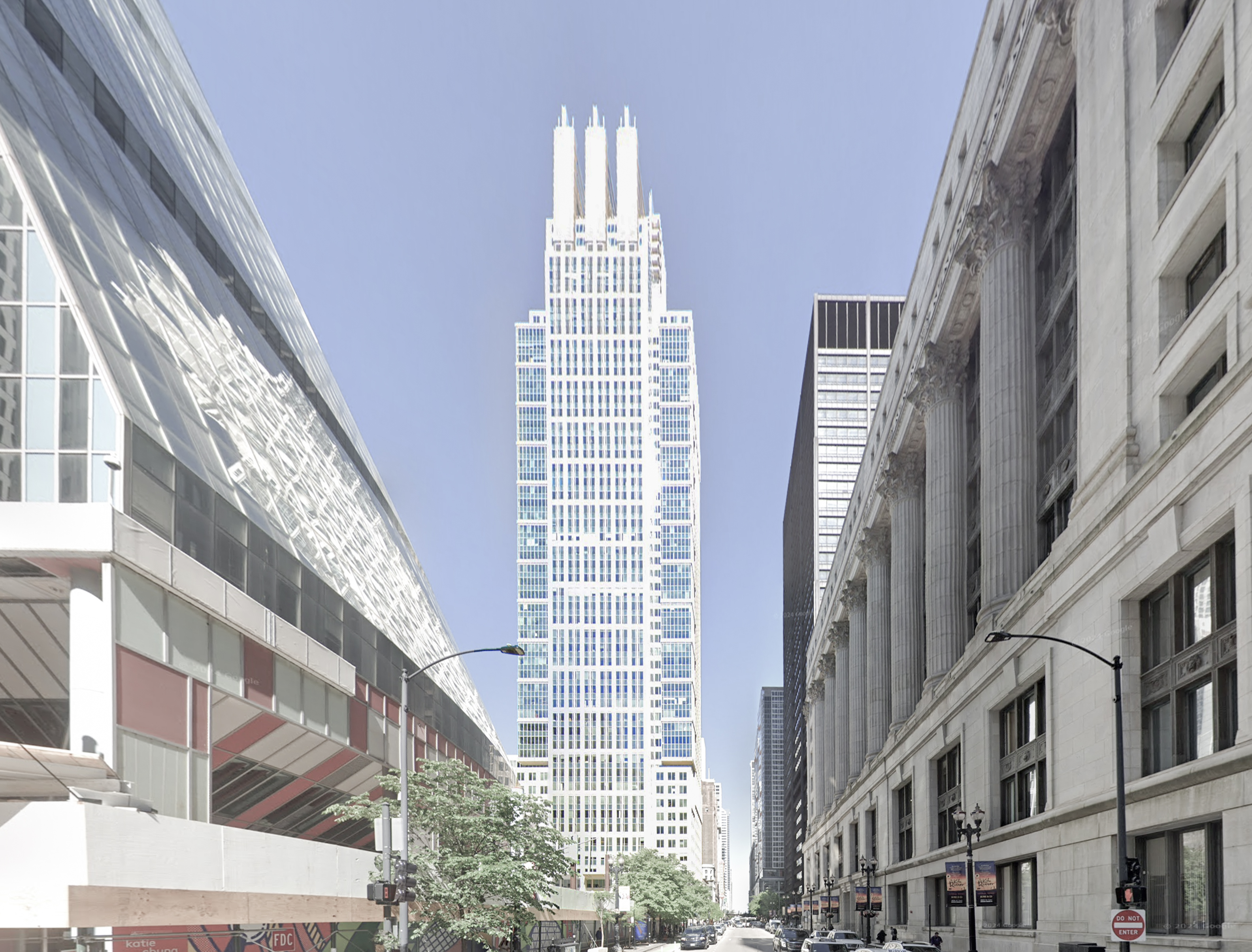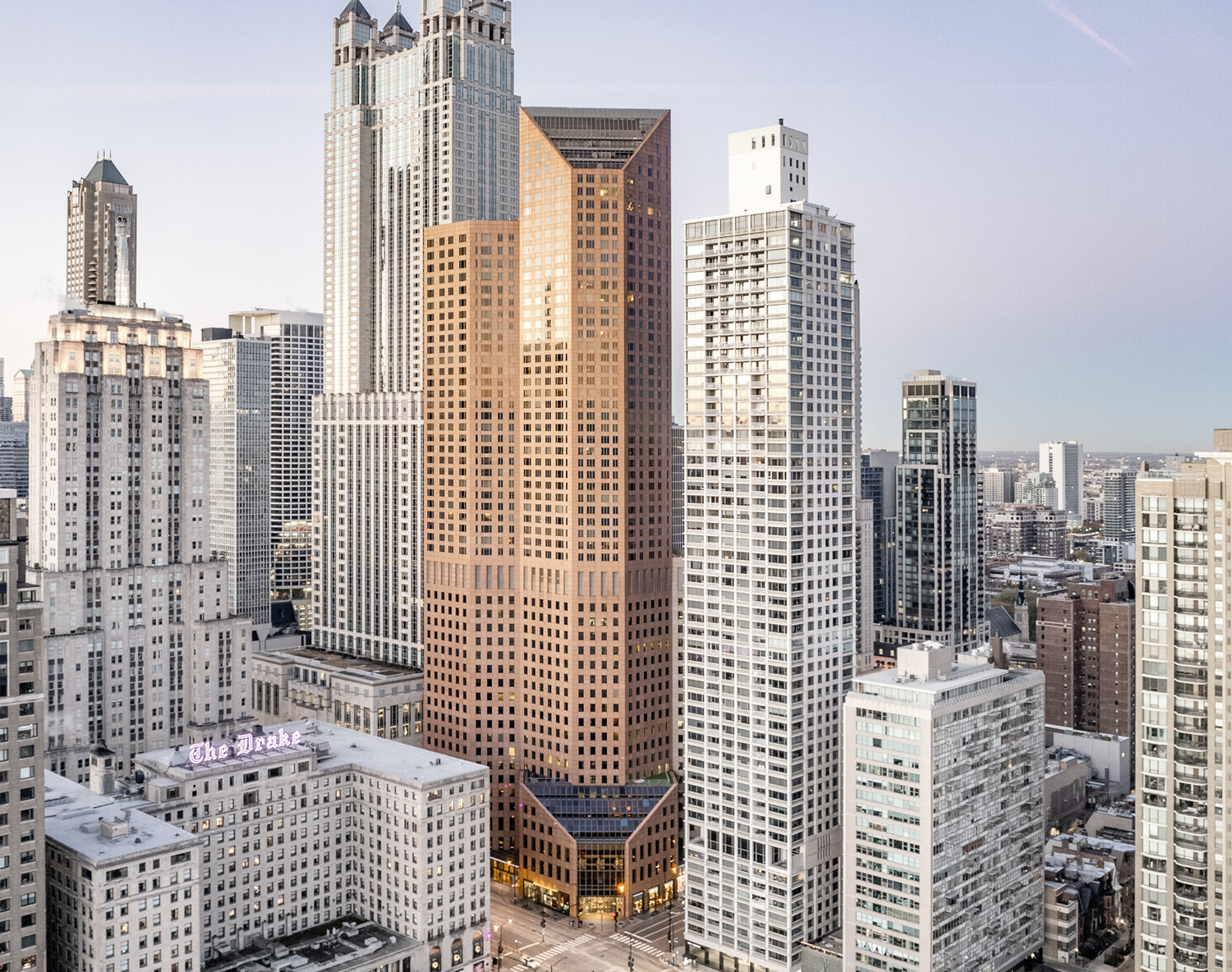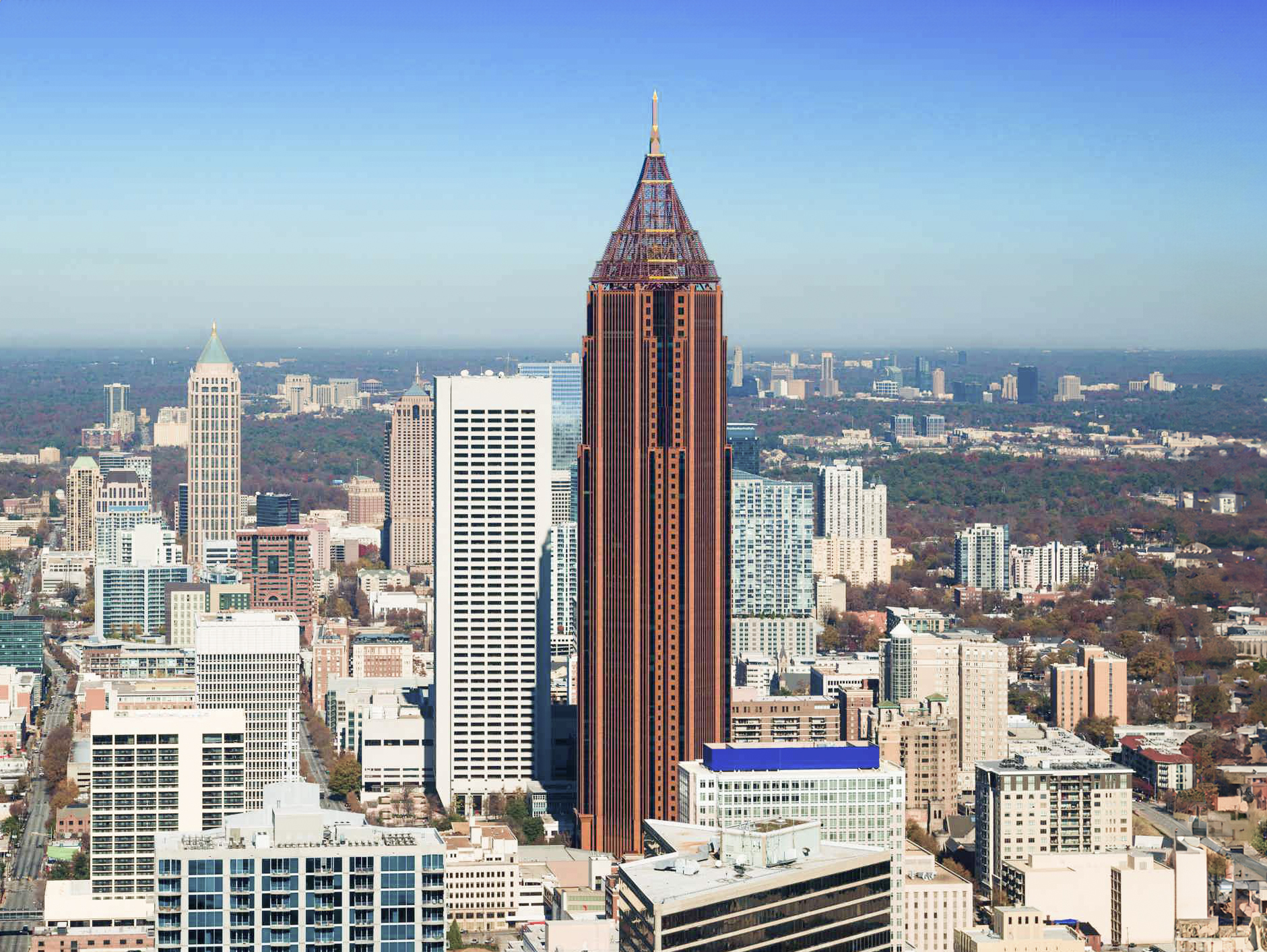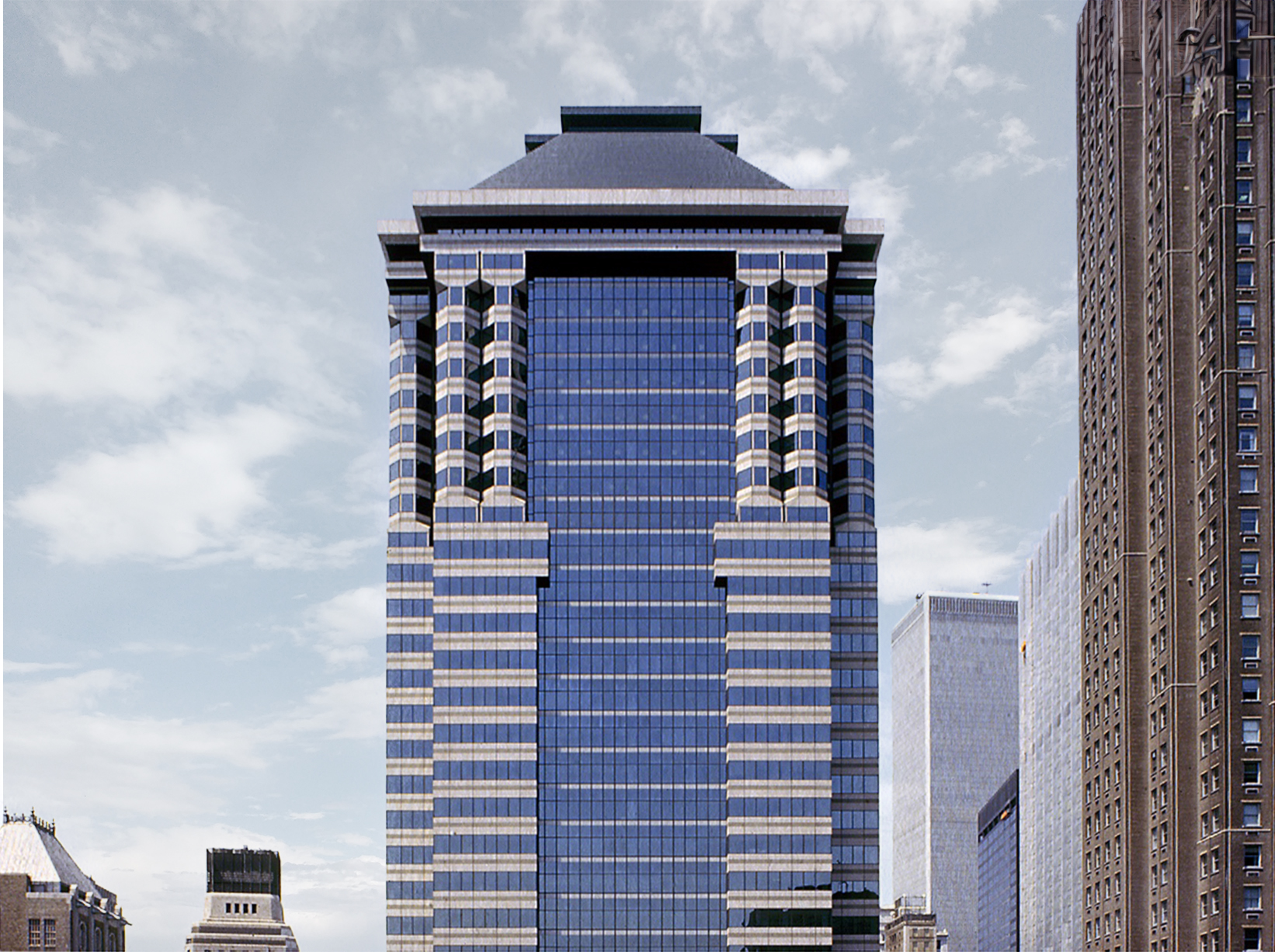The Leo Burnett Building is a Postmodernist skyscraper designed by Roche Dinkeloo & Associates, in association with Shaw & Associates, and built between 1986 and 1989, for a reported $100 million dollars, in Chicago, IL.
Leo Burnett Building is not the only name you might know this building by though. The building is, or has also been known as 35 West Wacker.
Its precise street address is 35 West Wacker Drive, Chicago, IL. You can also find it on the map here.
